#mung bean flower
Explore tagged Tumblr posts
Text

Mr the Mung Bean enjoying his visit to his Mom's garden.



It was a warm day and trying to be involved with everyone's business was tiring work!
Silken Windhound, 14 months
#Mr the Mung Bean#silken windhound#snootblr#sighthound#photozoi#original photos#8-2024#garden#flowers#busybody
115 notes
·
View notes
Text

Chinese Mung Bean Cakes with Pumpkin Fillings (Vegan)
#vegan#desserts#chinese cuisine#east asian cuisine#mid autumn festival#mooncakes#mung beans#pumpkin#glutinous rice flour#coconut condensed milk#edible flowers#rose#butterfly pea#coconut sugar#coconut oil#eat the rainbow
193 notes
·
View notes
Text

Vegan Flower Omelets
#vegan#breakfast#brunch#veganized#omelette#vegan egg#moong dal#mung beans#nasturtium leaves#garlic powder#black salt#kala namak#edible flowers#nasturtium#vegan cheese#coconut oil#sea salt#💚#🧡
9 notes
·
View notes
Text
red bean pastries#pastries#mung bean pastries







#food#desserts#culture#china#pastries#red beans#mung bean#red bean pastries#mung bean pastries#art#flowers#beautiful!
178 notes
·
View notes
Text

🏳️🌈Thai Wedding Ceremonies🏳️🌈
One of the prompts for Thai the Knot is “ceremony,” and this post will break down the several ceremonies that can take place during a Thai wedding. The order, duration, and even priority of certain ceremonies are up to the couple, and some traditions can be kept or excluded at the couples’ discretion. Many of these ceremonies can take place in a single day, while other couples may choose to spread these ceremonies out over several days.
Technically, same-sex weddings are not traditional weddings, so it would be up to the couple to adjust it to suit their own circumstances. Some would pick a role and stick with it for the ceremony (for example, in a sapphic wedding, one person may assign themselves as the “groom” and the other as the “bride.” A traditional wedding is not a rigid rule to follow but more like a template that you may customize to suit you if need be (if your parents are not too unreasonable). (recentadultburnout)
Additionally, there are traditions that are inspired by Western or Chinese influence, which we will discuss later in the post.

🏳️🌈Buddhist Ceremony (พิธีสงฆ์) (phithi song)
If the couple chooses to do a one-day Thai wedding, the first ceremony that happens on that day will be Phiti Song (monk ceremony-พิธีสงฆ์) (recentadultburnout). Buddhist monks are invited to bless the couple’s relationship; doing so is believed to ensure the relationship’s longevity and to encourage a long and healthy marriage. The couple will make merit by offering food to the monks; when holding the rice ladle, it is said that the person who places their hand above the other’s will have the upper hand in the relationship (Thailand Foundation). After, “when the groom receives forehead anointing to bless the marriage from the monk first and gives one to the bride himself, with the hands of the monk holding and guiding his. In some cases, forehead anointing will be done by an elder the married couple respects instead of the monk” (recentadultburnout). However, forehead anointing can happen in other parts of the wedding day or be incorporated into other ceremonies (as we see in this video where forehead anointing happens separately from the Buddhist ceremony).

🏳️🌈Khan Mak Procession (แห่ขันหมาก) (hae khanmak)
The Khan Mak Procession (or parade) is when the groom and the groom’s friends and family will walk to the bride’s house while carrying khan mak (ขันหมาก) or engagement trays. The Khan Mak procession can be two parts; the first is Khan Mak Ek (ขันหมากเอก), or the primary procession. The Khan Mak Ek tray includes betel leaves, silver bag, gold bag, auspicious grains, mung beans, black sesame, unhusked rice, puffed rice, and money envelopes (recentadultburnout). Other trays that counts as primary but has another name are the dowry for the bride (which both families agree upon prior to the ceremonies), rings for the bride and groom for the proposal ceremony, and candles and incense for accepting wai. The second part is Khan Mak Tho (ขันหมากโท) or the secondary procession, and those trays hold desserts, such as thong ek (flower egg yolk dumplings) and foi thong (shredded egg yolk threads), and other auspicious items that symbolize love, longevity, and fertility (WeddingList; recentadultburnout). The processions also require banana trees and sugar cane, which will be planted at the newlyweds’ home later.

When the groom and his family make it to the bride’s home, the groom is barred from entering until he can prove his love and stability to the bridal party and family. The bridal party will create three gates (or more) with string, and in order for the groom to pass, he must answer questions about the bride, declare his love, and/or simply pay for entrance. In this video, a groom must prove his physical capabilities in order to see his bride. In another, he’s negotiating with the bride’s family.

🏳️🌈Marriage Proposal Ceremony (สู่ขอ) (sòo kŏr) & Dowry (สินสอด) (sinsod thongman) Counting Ceremony
At the marriage proposal ceremony, the groom will ask for permission from the bride’s family to marry the bride. This is known as sòo kŏr (sookor); in the past, sòo kŏr happens prior to the wedding day. Nowadays this step is simply a play act for good fortune and to play up the happy occasion. The families act out these roles pretending to negotiate the terms of the dowry. Later, after the parents express their consent for the marriage to happen, the groom will bring the bride out into everyone's eyes, and then the Sinsod counting will begin (recentadultburnout).
Sinsod, or dowry, is usually agreed upon prior to these ceremonies, so the bride’s parents will pretend to count it, mostly to show the guests the groom’s generosity. Sinsod (สินสอด) refers to a way the money used to be packed and presented to the bride's parents (recentadultburnout). Both parents then sprinkle popped rice and flowers from the other Khan Mak trays onto the sinsod/dowry, and sometimes, the bride’s mother will “struggle” to carry or lift the dowry to imply that it’s too heavy because of the amount (again, to show the generosity of the groom) (Thailand Foundation; recentadultburnout).

🏳️🌈Engagement Ceremony
Traditionally, engagement ceremonies were done separately long before the wedding day. Firstly, the groom expresses his intention to marry the bride by bringing his parents to approach the bride’s parents (ทาบทาม-approach), privately and outside of any celebratory ceremony. Once the groom's side gets an approval, the groom's side will proceed to go sòo kŏr the bride and, during the process, establish details for the dowry, pick an engagement date, etc. The couple then does an engagement ceremony on a later date, and then the preparations for a wedding can happen after that. How short or long the period between engagement and marriage is entirely up to the party involved.
More recently though, engagement ceremonies are now done on the same wedding date for ease and to adhere to the auspiciousness of their wedding day. Hence, the sòo kŏr or counting of the dowry is more performative (as described above) when the ceremonies take place on the same day. If done on the same day as the other ceremonies, the rings will be carried to the bride’s home in the Khan Mak procession. “In the process of giving the engagement ring, the groom first puts the ring on the bride, and then the bride bows down to the groom. After that, it's the bride who will put the ring on the groom” (recentadultburnout). Here is a video that shows what a ceremony could look like. With more awareness of gender equality, the groom putting the ring on his bride’s finger first is now a “symbolic act;” additionally, some couples “adjust the tradition by both performing the wai gesture to show respect towards each other” (Thailand Foundation).
After this, the couple will pay their respects to their parents and older relatives. “The meaning of this is to ask the parents and relatives of both the bride and groom to acknowledge and look after them as a new member of their partner family.”
“This step is done by bowing down without holding your hands open. 3 times for the parents and once for others. After bowing down, the couple will hand a raft of incense sticks to the elders. They will take it and then tie the bride and groom's wrists with holy thread for good fortune and as a symbol of being a member of the family, along with giving blessings and money envelopes as gifts for the newlyweds. Other valuables will also be given as a blessing and as funding for them to build a family together.” (recentadultburnout)

🏳️🌈Sai Monkhon (Joining by Thread) & Water Pouring Ceremony (รดน้ำสังข์) (rod nam sang)
“The bride and groom must sit or kneel next to each other. Their arms will rest on a small padded table and their hands must be held together in prayer position. An elder member of the family – who is considered to have a successful marriage – will place the traditional headpiece called Mong Kol on the head of both the bride and groom. This string headpiece, previously blessed by monks, must be made out of one piece of cotton. This will join the couple in ceremony, and symbolically for the rest of their lives.” (Thailand Foundation)

Following this is the water pouring ceremony (sometimes referred to the shell ceremony in other sources). “The ceremony begins with incense and candles being lit to honor the Three Jewels. The newlyweds sit on a bench, preparing to receive holy water, which is thought to be a life blessing. The honor guest (prathan: chairman, president, honor guest) will put the nuptial good luck thread on the newlyweds' heads and anoint their foreheads, and then the holy water pouring will start in the order of seniority, one by one. Most of the time, the people who get to do it are the ones who are already married, not children or teenagers. When it's over, the honor guest will remove the nuptial good luck thread, which must be taken off from both the groom and the bride at the same time, and roll it all together to put it on the groom's hand or the bride's hand, along with congratulating the pair.” (recentadultburnout)

🏳️🌈Preparing the Marital Bed & Nuptial Chamber
Unlike the previous ceremonies and receptions, preparing the marital bed and sending the bride and groom to their bedroom is considered a private tradition. When it's an auspicious time, their family will prepare rice, flowers, and other things according to the beliefs to sprinkle on the bed where the newlyweds will sleep. The bed sheet they use in the ceremony must be the newly bought one (recentadultburnout). Preparing the bed also consists of with various auspicious items that are the symbols of prosperity and fertility: “a mortar to represent solid love, an unripe squash to bring a happy marriage, the figure of a sleeping cat to show comfort at home, a symbol of a rooster to promote waking up early, and finally a cane as a symbol of long life” (TheThailandLife).
“In the ceremony, the elders, whom both sides respect, will make a bed and arrange the pillows. This is done privately by the couples’ parents and couples who were rightfully married according to tradition and have a good, long married life and also be accepted in society as ethical and good people. The purpose of this ceremony is for auspiciousness and to give a good example of a good marriage for the newlyweds.” (recentadultburnout)

🏳️🌈Western Influences/Additions
After all the ceremonies, a Thai couple can choose to have an after party or reception to further celebrate the marriage with friends and family. Guests play games, take photos with the bride and groom, give speeches, etc.
In a modern Thai wedding reception, you may find more Western influence, such as a Western wedding cake and cake cutting ceremony, a bridal bouquet toss, etc. Exchanging rings is also now part of Thai wedding ceremonies, whereas they previously were not. Style of dress and attire can also have Western influence. Some couples opt for wearing traditional Thai wedding attire (which can be quite varied depending on what region of Thailand one is in), but others may prefer a white wedding dress! Some would do both. Thai style for the morning ceremony and western style for the evening. Usually, traditional Thai weddings do not have events such as bachelor or bachelorette parties or honeymoons, but a couple can include them if they want.

🏳️🌈Chinese Influences/Additions
A common addition to a Thai wedding is a tea ceremony. “It is a Chinese tradition to pay respect to the elderly. The bride will prepare a teapot and a teacup, and the elderly relatives who are attending the ceremony will sit in order of seniority. The groom's relatives will sit on the left. The newlyweds must sit together at the start of the ceremony. They will kneel down and pour tea into a cup, place it on a tray, and lift the tray with both hands at the same time. and send it to the attendee to drink until the cup is empty. Then elder relatives will bless them and give gifts, and the newlyweds will give something in return. They can be general items like cushions, towels, or glassware. At the end of the tea ceremony The newlyweds will eat Khanom Ei and Khanom Bua Loi together to symbolize sweet love.

The tea ceremony might happen after the wedding day, like how it happens according to Chinese tradition, or it might be combined with the accept wai step as they have the same purpose.” Here is an example of a tea ceremony incorporated into a traditional Thai wedding. (recentadultburnout)

🏳️🌈 What's ThaiTheKnot2025? 🏳️🌈 Guidelines 🏳️🌈 Prompts 🏳️🌈 Discord & Carrd 🏳️🌈
#thailand#thai bl#thai gl#thai ql#TTK Resource#fandom event#thai fandom#thai drama#Thai wedding#Thai culture#Wedding#Marriage
102 notes
·
View notes
Text
The Mid-Autumn Festival (中秋节), a Chinese celebratory season observed by many East and Southeast Asians, has begun. Held on the 15th day of the eighth lunar month, which is in the middle of autumn, the festival marks the end of the season’s harvest and is a time to appreciate the moon at its fullest and brightest. Besides feasting eyes on the moon and lanterns of different shapes and sizes, Mooncakes (月饼), a rich pastry with all sorts of fillings, are undoubtedly the main highlight of the festival and are traditionally shared among family and friends.

The Cantonese Mooncake (广式月饼) is the most commonly found traditional mooncake in Singapore. Its fillings consist of lotus seed or red bean paste and usually include one, two or four salted duck egg yolks. Many would also be familiar with the snow skin variant that was created in Hong Kong in the 1960s as a healthier alternative to traditional baked mooncakes. The fillings and a ball of dough are traditionally pressed into a wooden mould, which embosses intricate wordings of the pastry shop’s name or stuffing on top of the pastry.
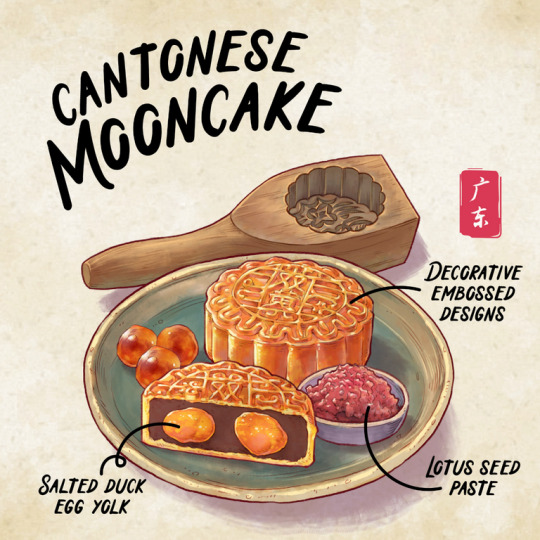
A mooncake with various flavours such as rich, savoury-sweet and peppery, the Hainanese Mooncake (海南月饼), also known as Su Yan Bing (酥盐饼) is traditionally filled with ingredients such as fried shallots, lard, salt, white pepper, rose-flavoured white sugar, sesame seeds, melon seeds and dried wild tangerine skin peel. The filling is encased in a thin crust made with flour, salt and lard.
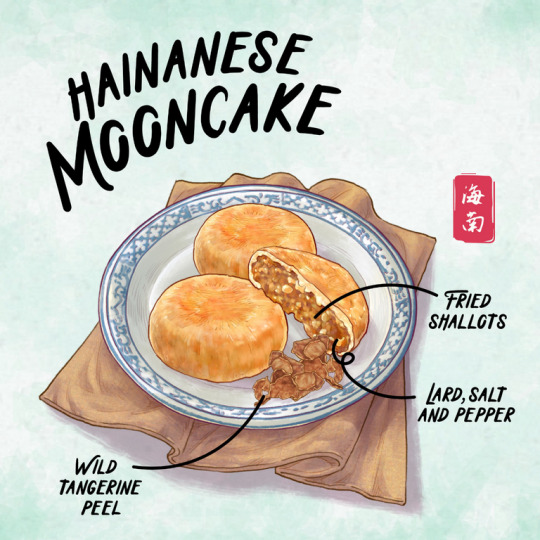
The Hakka Mooncake (客家月饼) is also called Yu Gao (月糕) and is a flat, snow-white disc that is typically made with cooked glutinous rice flour and sugar, giving it a crumbly and powdery texture. It is usually embellished with more intricate designs, often with animals and flowers. Although it doesn’t usually contain any fillings, some come with candied winter melon, desiccated coconut and sesame seeds mixed with glutinous rice flour, sugar, margarine and water.

Easily distinguishable by the red stamp of Chinese characters on the top of the crust and its white disc-shaped pastry which resembles a bright moon, the Hokkien Mooncake (福建月饼) consists of a dry and sweet filling that is made of candied winter melon, tangerine peel, melon seeds, sugar, and cooked with lard or peanut oil. A less common type is a savoury version with minced meat filling. Once known as Scholar Cakes (状元糕), they were given to those who took part in the Imperial examinations. Today, it is given as a symbol of good luck to those who are about to sit for their exams.

Many would be familiar with the Teochew Mooncakes (潮州月饼). It has a crispy, spiral-layered crust that crumbles easily. It originated from the Chaoshan (潮汕) area in Guangdong Province and typically consists of yam paste and a salted duck egg yolk. Other traditional versions of the Teochew mooncake are still made by old school bakeries in Singapore. For example, La Bia (朥饼 or lard biscuit), where ‘La’ refers to pork oil, has a thinner, flaky crust with a thick mung bean or red bean filling. There are also alternative fillings including red bean, mung bean or lotus seed paste. There is also a steamed version of the typically baked Teochew mooncake, called La Gao (朥糕). It can either be served plain or with a mung bean filling.
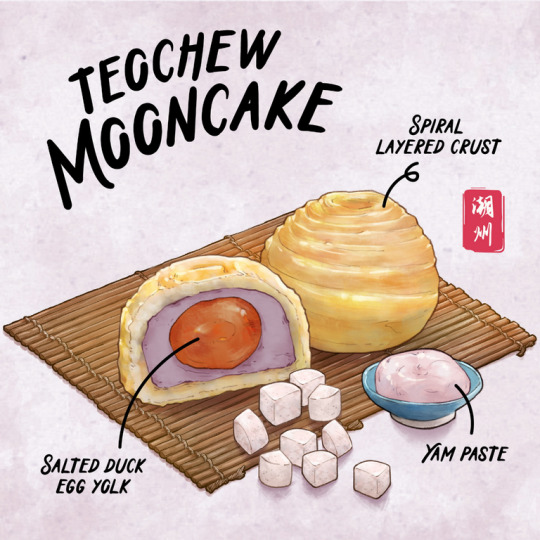
A Snow Skin Mooncake (冰皮月饼) variant was created in Hong Kong in the 1960s as a healthier alternative to traditional baked mooncakes. Similar to mochi, its crust is made of glutinous rice flour and varies in colour, based on the flavours used. And unlike traditional mooncakes, these are best served cold!
youtube
Mooncake information and drawings courtesy of Ministry of Culture, Community and Youth.
#Mid-Autumn Festival#中秋节#Mooncake Festival#农历八月十五#Chinese Culture#Chinese Tradition#Celebration#Mooncake#月饼#Cantonese Mooncake#广式月饼#Hainanese Mooncake#海南月饼#Hakka Mooncake#客家月饼#Hokkien Mooncake#福建月饼#Teochew Mooncake#潮州月饼#Snow Skin Mooncake#冰皮月饼#Recipe#Video#Youtube#Snack#Dessert#Asian Food#Food#Buffetlicious
133 notes
·
View notes
Text
If all Zong Zi or Rice Dumplings look the same to you, you’re not alone! Zong Zi (粽子) or Bak Chang are a variety of glutinous rice dumplings traditionally eaten by the Chinese during the Dragon Boat Festival (端午节). Here are six types of popular Zong Zi from various dialect and ethnic groups in Singapore.

youtube
Hokkien Rice Dumpling (福建咸肉粽) - One of the most common Zong Zi that can be found in markets and stores, the Hokkien Zong Zi is wrapped in bamboo leaves is recognized by its dark appearance from soy sauce infused rice and distinct aroma from the five-spice seasoning. Usually made with pork belly, salted egg yolk, chestnuts and dried shrimps.
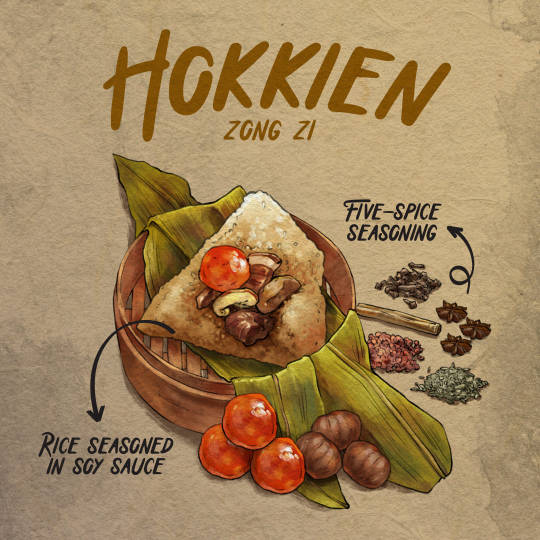
Cantonese Rice Dumpling (广东咸肉粽) - The ingredient that sets Cantonese Zong Zi apart is the filling of mung beans or green beans. One can also order a variation with a salted egg yolk. The glutinous rice is also seasoned with salt and garlic oil instead of soy sauce.
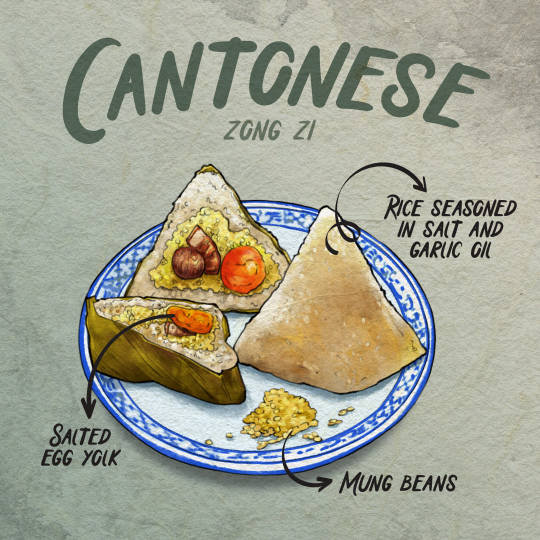
Nyonya Rice Dumpling (娘惹粽) - The Nyonya Zong Zi is the most distinguishable rice dumpling for its bright blue tip that is typically made from the extract of the butterfly pea flower. It is also sweeter in taste and aroma because of its pandan leaf wrapper and candied winter melon.

Teochew Rice Dumpling (潮州粽) - The savoury yet sweet taste of a Teochew Zong Zi comes from various ingredients such as red bean paste or lotus paste, fatty pork belly, earthy mushrooms and dried shrimp. Chestnuts are also added to the dumpling for texture.
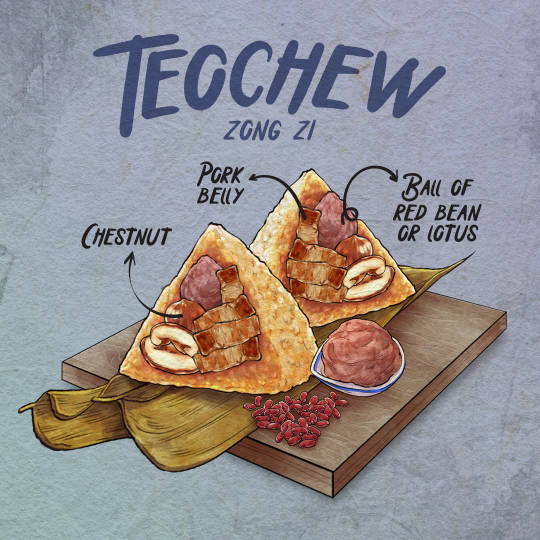
Hainanese Rice Dumpling (海南肉粽) - The Hainanese Zong Zi’s most distinctive trait lies in its portion. It is filled with generous chunks of pork belly, whole chestnuts, mushrooms, and seasonings of savoury additions like five-spice powder, dark soy sauce, and black pepper. It is also usually served with a dollop of palm sugar syrup, adding a nice balance of sweetness to its savoury and slightly spicy flavour.
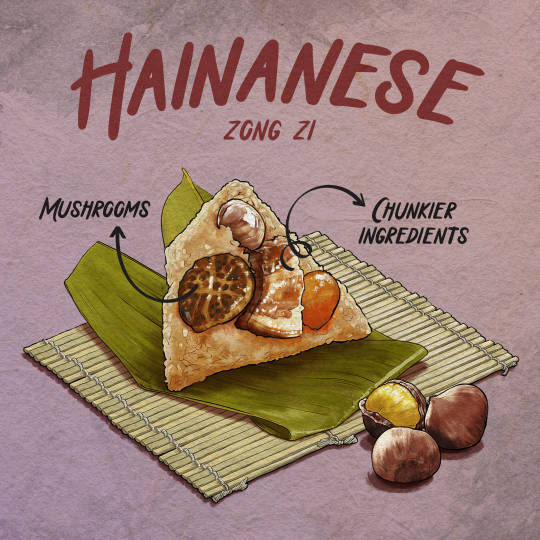
Hakka Rice Dumpling (客家粽) - Steamed in bamboo leaves, the Hakka Zong Zi consists of preserved vegetable filling, juicy pork belly strips and savoury mushrooms. It is also sometimes filled with beans.
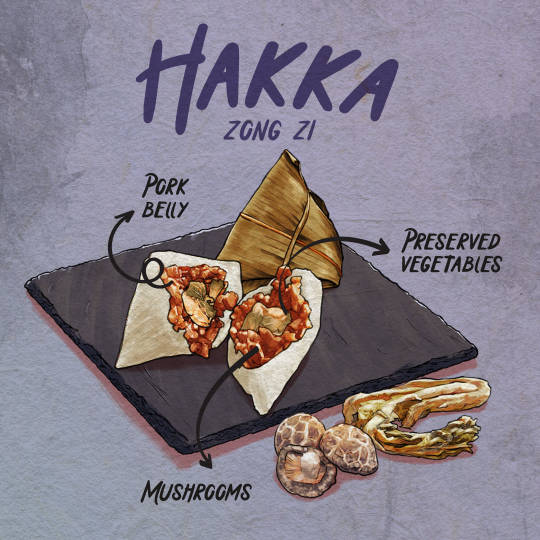
Zong Zi info from here and images from Ministry of Culture, Community and Youth.
#Dragon Boat Festival#端午节#农历五月初五#Rice Dumpling#粽子#Zong Zi#Hokkien Rice Dumpling#福建咸肉粽#Cantonese Rice Dumpling#广东咸肉粽#Nyonya Rice Dumpling#娘惹粽#Teochew Rice Dumpling#潮州粽#Hainanese Rice Dumpling#海南肉粽#Hakka Rice Dumpling#客家粽#Video#Youtube#Asian Food#Food#Buffetlicious
113 notes
·
View notes
Text

Cherry blossoms. Zucchini flowers. I walked under the pergola in the shade of the bougainvillea. Sweet potato leaves. Pumpkin seeds. The path smelled like a feast for the bees. I learned the meaning of thirst. It's a special kind of love to receive a cool jar of pickled plums in time for the summer heat. To have been planned for and expected. Rehydrated shiitakes. Alkaline dumplings, dipped in honey. There is a bowl of sweet mung bean soup sitting in the fridge. There is someone that asks – have you had dinner yet? Bamboo shoots. Mountain ferns.
#2024#2024/09/27#illustrans#rejectscorner#twcpoetry#poetryriot#micropoem#micropoetry#poets on tumblr#writers on tumblr#poets of tumblr#poetry blog#poetrytribe#writerscreed#verse#spilled ink#poetry#poem#writing#creative writing#lit#short poem#typewriter#typewritten poem#writer on tumblr#writer community#poets corner
13 notes
·
View notes
Text
Growing foxtial millet, QMYS Section 3, Part 1
Continuing the Qimin yaoshu齊民要術 (“Essential Techniques for the Common People) by Jia Sixie (fl. c. 540). Advice for growing foxtail millet. Due to the length of this section, the translation will be divided into several posts. This post covers the introductionary dictionary definitions and Jia Sixie's own advice. Subsequent posts will cover the extensive quotations from earlier works.
[Translator's preface]
After opening the book with two general sections on tilling the fields and selecting seed grain, sections 3-54 cover the cultivation of specific plants (field crops, vegetables, fruit- and timber-trees, dye plants). The first, and lengthiest, of these is dedicated to the foxtail millet (Setaria italica). Known under many names, in Jia Sixie's home region it was often simply referred to as gu穀, “grain”. I suppose you could draw parallel to calling maize “corn” in English. Foxtail millet was first domesticated in North China during the Neolithic and remained the main staple crop there during the Early Medieval North China, . As such, by the time QMYS was written, Jia Sixie could draw on several millennia of experience with foxtail millet farming.

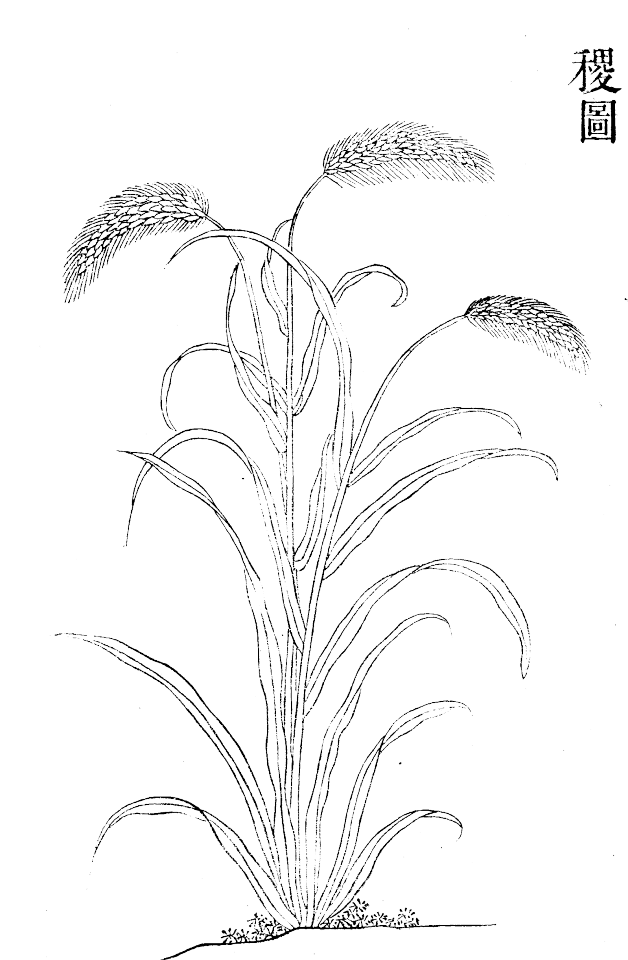
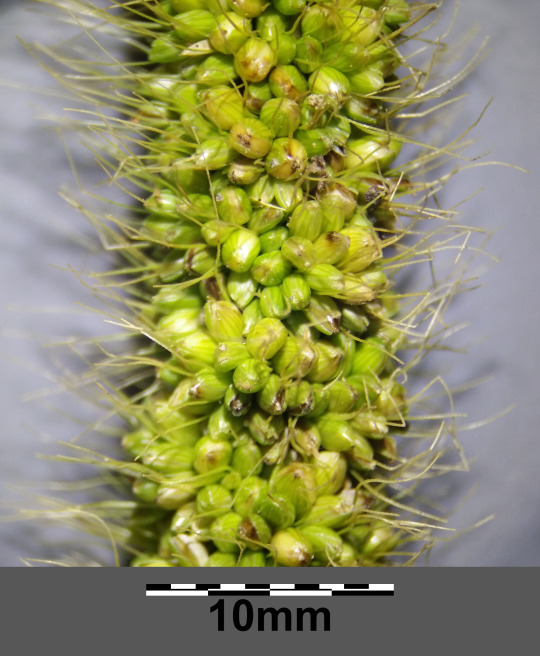
[Other plants mentioned]
Certain other plants are mentioned more incidental in this section.
Plants more or less suited to precede foxtail millet in a crop rotation system:
Mung beans or green gram (Vigna radiata), lüdou緑豆 (lit. "green beans"), used as green manure in crop rotation with millet.

Adzuki beans (Vigna angularis), xiaodou小豆 (lit. "small beans") served a similar function.
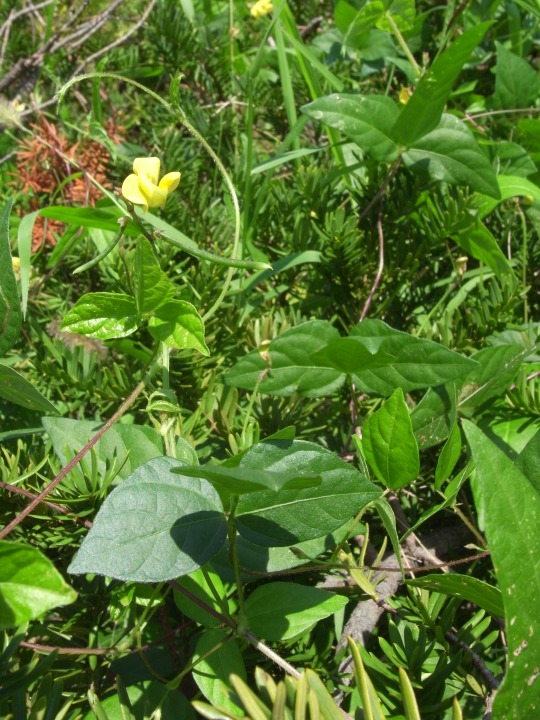
Hemp (Cannabis sativa), ma麻, grown both for textiles and oil
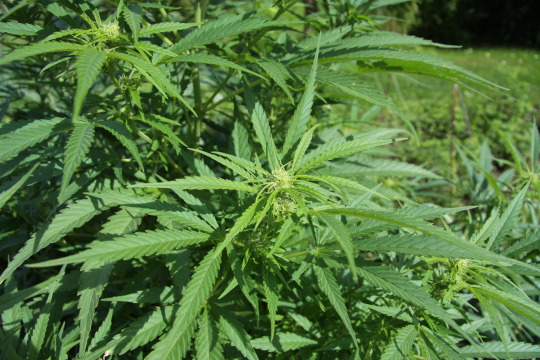
Broomcorn millet (Panicum miliaceum), shu黍, popular for brewing millet beer

Sesame (Sesamum indicum), huma胡麻 (lit. “foreign hemp”), considered the best oilseed crop

Turnip (Brassica rapa var. rapa),wujin蕪菁, leaves and roots are edible, and the seeds can be pressed for oil.

Soybean (Glycine max) dadou大豆 (lit. “large beans”), used as fodder or famine crop, but also fermented into sauces, etc.

Gua底 is a general term for gourds and melons
Trees whose leaves and flowers can be used to predict the best time for sowing foxtail millet:
Beiyang菩楊 appear to refer to some kind of willow (Salix) or poplar (Populus)

Peach (Prunus persica), tao 桃

Jujube (Ziziphus jujube), zao棗

Mulberry (Morus alba), sang桑

[Tools]
The illustrations below are taken from Wang Zhen's王禎 (1271-1333) Nongshu農書, who of course wrote several centuries after Jia Shixie. While many tools were essentially timeless and in continuous use up to the modern age, developments did happen, and also terminology could change.
The preferred tool for sowing was the seed drill, lou耬

(Wang Zhen's louche耬車).
The “beater”, ta撻, (for a lack of a better translation) was pulled over the furrows after sowing to compact them. Wang Zhen describes this tool as a bunch of branches weighed down by stones.
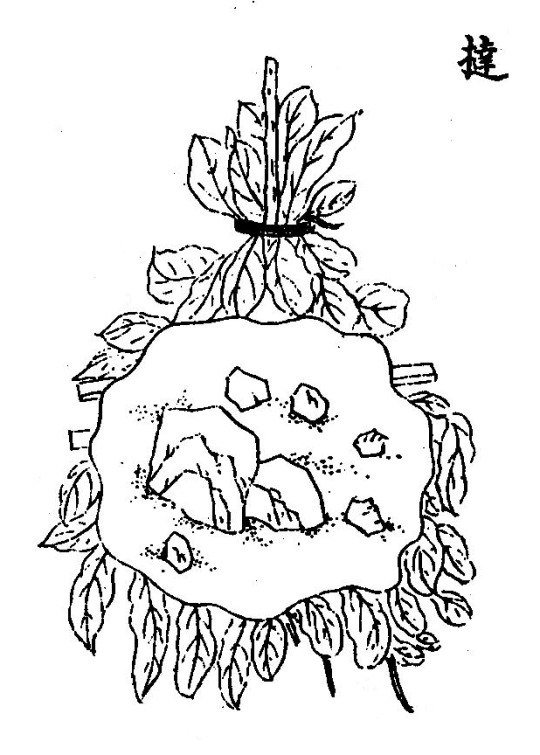
The arrowhead hoe, zuchuo鏃鋤 was a small, pointed hoe. According to Wang Zhen, arrowhead hoeing was one of four methods for hoeing with the youchu耰鋤.
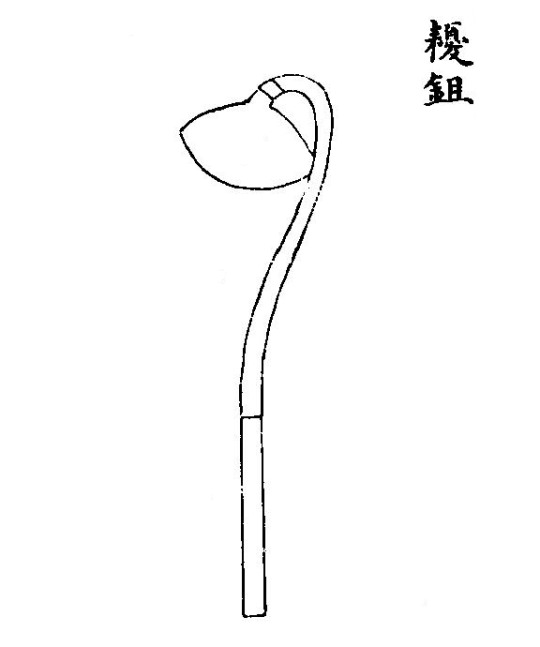
QMYS is the oldest text to refer to the iron-tine rake, tiechi loucou鐵齒𨫒楱
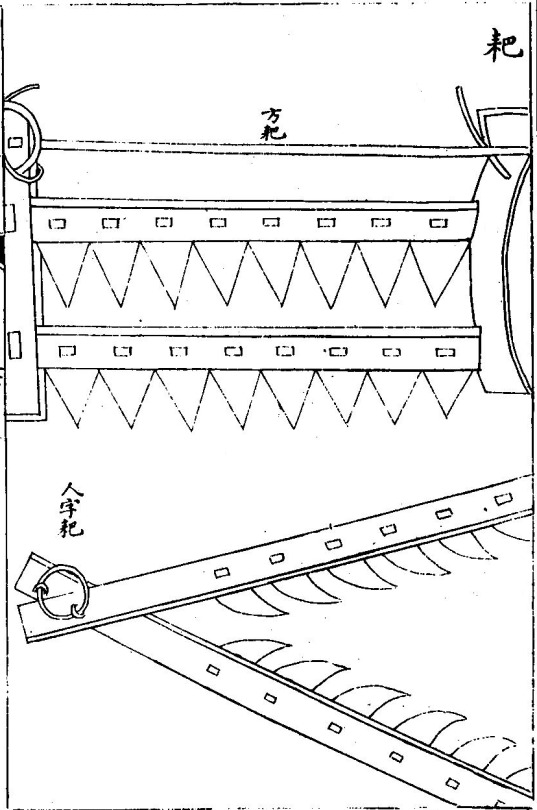
QMYS quite often refer to the spear-harrow, feng鋒. Wang Zhen notes that by his time it was no longer in use, his description of it as a cross between a plough and a spade may therefore not be very accurate.

The sickle, yi刈, was the main tool for reaping field crops.

(Wang Zhen's yidao刈刀)
[Books quoted by QMYS in Section 3, in order of appearance]
The Erya爾雅 (“Approaching the Correct”) is the oldest surviving Chinese glossary. Modern scholarship dates the book to the late Warring States and/or early Western Han periods. It is quoted numerous times in QMYS. This is the second QMYS section to quote from the Erya. The last previous was Section 1 (“Tilling the Fields”).
The Shuowen 說文 (“Explaining Graphs”) by Xu Shen許慎 (c. 58 – c. 147) analyses the composition and reasoning behind the different characters. It is quoted numerous times in QMYS. This is the second QMYS section to quote from the Shuowen. The last previous was Section 1 (“Tilling the Fields”).
The Guangzhi廣志 (“Wide Treatise”) by Guo Yigong郭義恭 (Western Jin) is now lost, but it is quoted numerous times in QMYS and other books. This is the first QMYS section to quote from the Guangzhi.
Guo Pu郭璞(276 – 324) was a Daoist wizard, poet and writer. His surviving writings include the oldest extant commentary on the Erya and a commentary on the Shanhaijing. This is the first QMYS section to quote Guo Pu, from his Erya commentary.
Sun Yan孫炎 lived during Wei and was disciple of Zheng Xuan. He wrote (a now lost) commentary on the Erya where he pioneered the use of the fanqie system to indicate pronunciation. This is the first QMYS section to quote Sun Yan.
Liu Zhang 劉��(200 – 176) was a grandson of the Han founder. According to the Shiji he recited the Gengtian ge 耕田歌 (“Song of Ploughing the Fields”)at a banquet during the regency of Empress Dowager Lü, to show his opposition to the Lü clan's power, and he later became one of the main actors in their downfall.
The Guanzi管子 (“Master Guan”) is a collection of treatises on statecraft traditionally attributed to Guan Zhong管子 (d. 645 BC9), an influential minister in Qi during the Spring and Autumn era. Section 3 contains the third quote from the Guanzi in QMYS, the first two are in the preface (which I have impudently skipped).
[The original text is a mix of large and small characters. I have collected the small text sections together as indented notes within {} brackets.]
[Translation starts here]
Section 3, Growing Foxtail millet
Growing foxtail millet [gu穀]:
{“Grain” gu穀 and “foxtail millet” ji稷 are names for setaria millet [su粟]. Grain is the collective name for the Five Grains, and does not mean setaria millet. However, today people solely consider foxtail millet to be “grain”, and [I] look to the customary name for it, and that is all.} [For the remainder, gu穀 will be translated as “foxtail millet” in the sections written by Jia Sixie, ji稷 will generally be rendered also as “foxtail millet”, and su粟 as “setaria millet” (or just “foxtail” and “setaria”).] {The Approaching the Correctsays: “Zi粢 is foxtail millet [ji稷].”} {The Explaining Graphs says: “Setaria millet [su粟] is the fruit of excellent grain [gu穀].”} {Guo Yigong's Broad Treatise says: “The names of the kinds are Red Setaria and White Stem, Black-Patterned Sparrow Setaria, Duke Zhang's Mottled, Enclosed Yellow-Iron-green, Dark-green Foxtail, Snow-White Millet – likewise named White Stem, also White-Indigo Short, Bamboo Head-Stem Dark-green, White Wheat-Catching, Stone-Pulling Purest, Earth-black Dog-Paw.”} {Guo Pu's Annotations to the Approaching the Correct says: “Today in Jiangdong they call foxtail millet zi粢.”} {Sun Yan says: “Foxtail [ji稷] is setaria [su粟]”} {Note that the present age's names for setaria, many uses a person's family and courtesy names as the label name. There are likewise those where look and form established the names, and likewise those where what happened to be appropriate became the designation, [I] rely on them then to set them out, and that is all:} {Vermillion Foxtail, Highland Yellow, Liu Zhuxie, Daomin Yellow, Whittled-Grain Yellow, Sparrow's Regret Yellow, Continued Life Yellow, Hundred Days Grain, Upright Wife Yellow, Unworthy-of-Rice Grain, Slave Child Yellow, Jiazhi Foxtail, Schorced Gold Yellow, Quail's Slipper Iron-green which is also named Wheat's Floor-Fighter: These fourteen types ripen early and endure drought, early ripening avoids insects. The Whittled-Grain Yellow and Unworthy-of-Rice Grain types have a pleasing taste.} {Now-Fell-off-the-Chariot, Short Horse-Carer, Hundred Flock Sheep, Hanging Snake Red-Tail, Bear-Tiger Yellow, Sparrow's and People's Benefit, Horse Reins, Liu Pig Red, Li Yu Yellow, Amba Grain, Donghai Yellow, Rocky lesuo䮑歲, Dark-green-Stalked Dark-green, Dark Excellent Yellow, South-of-the-Paths Crop, Nook-and-Dike Yellow, Song Ji's Idiocy, Point Out Yellow, Rabbit Foot Dark-green, Kind Sun Yellow, Shifting Wind Red, Single Sunlight Yellow, Mountain Saline, Dundang Yellow: These twenty-four types all have spikes with bristles, endure wind, and avoid harassment from sparrows. The Single Sunlight Yellow type is easy to hull.}
{Precious Pearls Yellow, Popular Gain White, Zhang Lin Yellow, White Salt Foxtail, Thousand Hooks Yellow, Zhang Yi Yellow, Gleaming Tiger Yellow, Chief Slave Red, Reed-Stalk Yellow, Xun Pig Red, Wei Shuang Yellow, White-Stalked Dark-green, Bamboo-Rooted Yellow, Attuned Mother Large-grained millet, Rock-Pile Yellow, Liu Sand-White, Seng Long-lasting Yellow, Red Large-grained Foxtail, Auspicous Swift Yellow, Otter-Tail Dark-green, Continued Potency Yellow, Concave-Straw Yellow, Sun Long-lasting Yellow, Pig-Shit Dark-green, Smoking Yellow, Happy Slave-girl Dark-green, Level Long-life Yellow, Deer Stubble White, Salt for Breaking Baskets, Yellow dianshan, Hilly Place Yellow, Red Ba Large-grained millet, Deer Hoof Yellow, Famished Dog Iron-green, Can-be-Pitied Yellow, Hulled Foxtail, Deer Stubble Dark-green, Aluoluo: These thirty-eight types are the single stems great foxtails? [the received QMYS text is defective at this point]. The White Salt Foxtail and Attuned Mother Large-grained millet types have a pleasing taste. The three Concave-Straw Yellow, Hilly Place Yellow and Pig-Shit Dark-green types are bad tasting. The Yellow dianshan and Happy Slave-girl Dark-green types are easy to hull.} {Bamboo-Leaf Dark-green and Rocky Yichu, Bamboo-Leaf Dark-green is also named Hu Foxtail, Water Black Foxtail, Swift Mud Dark-green, Charging Heaven Cudgels, Pheasant Chick Dark-green, Owl-Foot Foxtail, Goose-Head Dark-green, Hold-Piles Yellow, Dark-green Hawk-cuckoo: These ten types ripen late and endure floods. If there is a calamity of insects, they are consumed.}
In general there is foxtail which is fully ripened early or late, which sprouts and straw are tall or low, which harvest results are large or small, which natural quality is strong or weak, which hulled grain taste good or bad, which grain results in gains or losses{A}. The conditions of the land can be good or poor{B}, and mountains and marshes differ in what is suitable{C}. Obey Heaven's seasons, and evaluate the land's advantages, then [you] will employ little strength yet achieve success many times. Rely on feelings and go against the Way, [you] will toil and yet get nothing.{D}
{A: Those that ripen early have short sprouts and the harvest is large. Those that ripen late have long sprouts and the harvest is small. Those which strong sprouts are short, and belong to the yellow foxtail. Those which weak sprouts are long, and are dark-green, white, or black. Those with small harvests are good but make losses. Those with large harvests are bad but make gains.} {B: Good fields are suitable for late types, poor fields are suitable for early types. Good land is not solely suitable for late types, early types are also not harmful. Poor land is suitable for early types, late types will certainly not give successful result.} {C: For mountain fields, types with strong sprouts, to avoid wind and frost. For marsh fields, types with weak sprouts, to aspire to splendid results.} {D: Enter a spring to chop wood and climb a mountain to look for fish, and the hand will surely be empty. To face the wind when sprinkling water, or to go against the slope when moving a pellet, these conditions are difficult.}
In general for foxtail fields, mung beans or adzuki beans as the previous crop is the best; hemp, broomcorn millet, and sesame are next; turnip and soy beans are last.
{It is common to see gourds as the previous crop, they are no less than mung beans. Originally they were not discussed, for the moment then keep it in mind.} [This note may be a later addition.]
For 1 mu of good land, use 5 sheng of seeds, and for poor land 3 sheng.{A} Foxtail fields certainly must be changed annually.{B} Those sown in the 2nd Month or the 3rd Month are the early-planted grain. Those sown in the 4th or 5th Month are the late-planted grain. From 2nd Month, First Ten-day, until the hemp and beiyang willow sprout seeds is the best time. 3rd Month, First Ten-day, until the Pure and Clear [qingming] Period and the peach tree first flower is the middle time. 4th Month, First Ten-day until the jujube leaves sprout and the mulberry flowers fall is the worst time. For those which the yearly Way ought to be late, the beginning of the Fifth Month or Sixth Month are also possible.
{A: This is for early-planted foxtail, for late fields increase the number of plants.} {B: If twice sowing the seeds, the weeds will be many, and the harvest poor.}
In general spring sowing wish to be deep, and ought to be dragged with a heavy “beater”. Summer spring wish to be shallow, and just sprout from itself.
{Spring air is cold, and sprouting is slow. If not dragged with a “beater”, they will set root in hollows, and even if they sprout, they will immediately die. Summer air is hot, and they sprout quickly. [If] dragged with the “beater” and there happens to be rain, [the ground] will surely be hard and dry. Those in the spring that are very moist sometimes also are not necessary to beat. To be certain they want beating, [you] ought necessarily to wait for [the ground] to turn white. Wet beating will cause the ground to be hard and tough is the reason.}
In general when sowing foxtail, after rain is good. If there is a little rain, [you] ought accept the wetness and sow. If there is great rain, wait for the weeds to sprout.{A} During spring, if there is drought, on the land of the autumn tilling [you] might open the mounds and wait for rain.{B} During summer, if there are open mounds, not only will it sweep away and wash out that which does not grow, [but] in addition it and the grassy weeds will set forth together.
{A: [If] there is a little rain and [you] do not accept the wetness, there is nothing to give birth to the stalks sprouting. [If] there is great rain and [you] do not wait for [the ground] to turn white, wet rolling then will cause the sprouts to be frail. If weeds are abundant, to first hoe one time everywhere and afterwards accept sowing then will be good.} {B: On the spring-tilled, it does not hit the mark.}
In general the fields that want early or late are mixed together.{A} In years that are intercalary, after the solar periods draw close, [you] ought to have late fields. However for the most part [you] want early, early fields yield more than late.{B}
{A: Prepare for what is proper in the Way of the year.} {B: Early fields are clean and easy to manage. The late ones overgrow with weeds and are difficult to manage. Their harvest, regardless of large or small, follows from is proper for the year, and is not connected to early or late. However, early foxtail have thin husks, the hulled grains are solid and many. Late foxtail have thick husks, the hulled grain are small and empty.}
When the sprouts have grown similar to horse ears, then arrowhead hoe.{A} At places with gaps and holes, hoe and patch them.{B} In general for the Five Grains, only the small hoe is good.{C} For good fields, usually for each chi [foot], keep one hole.{D} For poor land, seek out mounds and tread on them.{E}
{A: The proverb says: “Want to get foxtail, at horse ears the arrowhead.” } {B: The work done might not be overstated. The profit gained this way is a hundred times.} {C: The small hoe not only saves strength, the grain is also twice as good. With a large hoe, the grass and their roots will be profuse and thick, a lot of work will be done yet the harvest will grow smaller.} {D: Liu Zhang's Song of Tilling the Fields says: “Plough deeply and sow thickly, the standing sprouts want to be spread out. For those not of their kind, hoe and get rid of them. The proverb which states: “[When you can] turn around the chariot and reverse the horse, [or] throw away the clothes [and they] do not fall down, both give ten shi when harvested” tells that harvest for [fields that are] very sparse or very thick are all equal and even.} {E: Not tilling is the reason.}
When the sprouts spring forth from the mounds, hoe deeply. When hoeing, do not get bored with the frequency. Once done, start again. [You] must not stop though there is no grass.{A} Spring hoeing is to lift up the earth, and summer to remove grass. For that reason, spring hoeing is not done when facing wetness. By the 6th Month and after, even if wet, in this case is not disliked.{B}
{A: Hoe not just to remove the grass, then the land will ripen and the fruit will be many, the chaff will be weak, and the hulled grain will grow. When hoeing is done ten times everywhere, [you] will then obtain “Eight [parts of ten?] Hulled grain”.} {B: During spring, as the sprouts are just then slight and their shade are not yet covering the ground, if wet hoeing, the ground will become hard. During summer, the sprouts cast a solid shade and the ground does not see the sun. For that reason, even if wet, in this case there is no harm. Master Guan says: “To make a state, cause the farmers to till when cold and weed [yun芸] when hot.” To weed is to remove grass.}
When the sprouts have sprung from the mounds, each time [you] have gone through rain, in the time [the ground] turns white, immediately use the iron-tine rake across and athwart to rake and harrow them.
{Method for raking: Make a person sit down on top, and frequently use their hands to tear off and get rid of grass, if grass block up the tines it will harm the sprouts. Like this [you] will make the ground ripe and soft, easy to hoe and save strength. When hitting the spear-harrow, stop.}
When the sprouts are one chi high, spear-harrow them.{A} Tillage is not about not embedding the root sprouts deeply, it kills the grass and increase the results, however it will make the ground hard and tough, lacking in moisture and difficult to till. Hoe five times everywhere or more, and it will not be bothersome to till.{B}
{A: Three times everywhere is always good.} {B: When for sure [you] want to till, after you have reaped the foxtail, if you promptly spear-harrow below the roots to burst them up, it will be soft and moist, and easy to till.}
In general when sowing, [you] want the ox to move slow and leisurely. The sower makes hurried steps to tread the mound base with his feet.
{If the ox is slow, the seeds will be evenly placed. If trod with the feet, the sprouts will thrive. When the footsteps connect with each other, it is possible to not bother with beating.}
When ripe, reap quickly. When dry, store quickly.
{If reaped early, the sickle-use will be excessive. If reaped late, the spikes will break. If there is wind, the harvest will diminish. If stored wet, the stalks will rot. If stored late, there is loss and waste. If continuous rain, they will grow ears.}
In general for the Five Grains, for the most part those sown in the first ten-day will give a full harvest, those in the middle ten-day a middle harvest, and those in the last ten-day a lesser harvest.
7 notes
·
View notes
Text
Salatbowl zum lunch
Roh, vegan, gluten- und zuckerfrei, sowie "wild"
Saladbowl for lunch
Raw, vegan, gluten- and sugarfree, as well as "wild"

Unser heutiges lunch mit den allerersten selbstgezogenen Sprossen.
Es gibt zahlreiche Firmen die Samen für die Sprossenzucht anbieten. Ich kaufe am liebsten bei Microgreens ein. Sie haben ein großes Sortiment und das ganze Zubehör, wie Gläser, Grow Grow Nuts, Kokoserde Pellets, etc.
Diese leicht scharfe Mischung besteht aus aus Mungbohnen, roten Radieschen, roten Linsen, Rettich und nennt sich "SalatMix"
Today's lunch with the very first home-grown sprouts.
There are numerous companies that offer seeds for growing sprouts. I prefer to buy from Microgreens. They have a large range and all the accessories, such as jars, grow nuts, coco soil pellets, etc.
This slightly spicy mixture consists of mung beans, red and white radishes, red lentils and is called “SalatMix” (salad mix)
Rezept für die "wilde" Sauce
Nachdem ich so gerne Salat esse, mache ich immer gleich ca. 500 ml
3 TL mittelscharfen Senf
Apfelessig und Olivenöl im Verhältnis 1:2
ein Schuss Birnendicksaft
1-2 EL geschälte Hanfsamen
1-2 TL Algenflocken
1-2 Zehen Knoblauch
ganz viele frische gemischte Kräuter, wie z. B.
Petersilie, Blätter und Blüten der Kapuzinerkresse, Bohnenkraut, Estragon, Liebstöckl, Spitzwegerich, Salbei, Löwenzahn und Sauerampfer
eine Prise gutes Steinsalz
so viel gefiltertes Wasser bis die gewünschte Konsistenz erreicht ist.
Recipe for the “wild” sauce
As I love eating salad so much, I always make about 500 ml
3 tsp medium-hot mustard
apple cider vinegar and olive oil in a ratio of 1:2
a dash of pear syrup
1-2 tbsp peeled hemp seeds
1-2 tsp seaweed flakes
1-2 cloves of garlic
lots of fresh mixed herbs, such as
parsley, nasturtium leaves and flowers, savory, tarragon, lovage, ribwort, sage, dandelion and sorrel
a pinch of good rock salt
as much filtered water until the desired consistency is achieved.

So ein Mittagessen ist ein wahrer Energielieferant. Reich an Proteinen, Vitaminen, Spurenelementen und Mineralstoffen, sowie Antioxidantien.
A lunch like this is a real source of energy. Rich in proteins, vitamins, trace elements and minerals, as well as antioxidants.
#grünwild#vegan#wildpflanzen#glutenfrei#roh#sprossen#bowl#wildpflanzen kulinarisch#vitamine#mineralien#protein#gesund#healthy#raw#antioxidants#ribwort#herbs#recipe#wild sauce#sprouts
3 notes
·
View notes
Note
ZEV THE ANON TAG ILL CRYYYY !!!
you sweetheart sending you kisses n rainbows n flowers wha 😭😭😭
from the prev ask:
the tattoos are tinyyyyyyyyyy eheh
VIET DESSERTS !! those are all so good omg omg. bánh bò and chè ba màu esp i always try to get the jelliesssss ; my family loves loves bánh tiêu
also to the person who commented on that ask !! chè mè den is rlly good , black sesame is so so good in a lot of things 0.0
BOBA 🧋!! what’s your goto order zevieee :D ; n understandable about the protein shakes ‘m not a big fan of the taste either -n-
ily muah
—🐋
HI 🐋 AAA YOURE SO SWEET SHSNMD 🥺 teeny tattoos!!! im sure they look so cute. love!!!
THE JELLIES ARE THE BEST PART OMG i save them for the end snsnsjsjjd & the family loving bánh tiêu !!! that’s so cute. OMG MINO I DIDNT SEE THE COMMENT i don’t think ive tried some of them yet rip > < i must !!!! ill get back to this when i try hehehe
BOBA AAAAA OKAY !!! i like mung bean milk tea + honey boba !! i also like lychee smoothies / lychee fruit teas + lychee jelly !! I ALSO LIKE lemon fruit teas + crystal boba !! BUT I ALSO LIKE thai tea / reg milk tea / taro sometimes too 🥺 wbu omg ?!
ew the shakes. my friend let me try one yesterday and said it was so good :’) i feel like this is one huge prank everyone is in on because none of these taste good bahahhaha omg :’)
#MWAAAAAAAAAAA OMG have a great day i love u!!!#cw food#tw food#cw food talk#tw food talk#🦢— mail !#🤍 from: 🐋 !
2 notes
·
View notes
Text

Got daylilies planted this evening, while soup simmered on the stove. Made it with dry beans I grew, foraged greens, herbs from the front garden, and leftovers, and it's great. (I only make great soup. I am the soup king, that's how it is.) Mung beans are sprouting on the counter, and my cool mushroom block is growing rapidly in the corner.



I'm looking forward to actually doing the planned remodel of the little room leading into the kitchen, where the laundry is. We want to add a sink and dishwasher, as well as more cabinets and counters. That'll mean I have room for more of the kitchen projects I used to do, like yogurt and kombucha, and not have to move the sprouts out of the way constantly. We keep putting it off because we don't know exactly what we're doing and we're the sort that likes to know exactly.


The chicks are getting big and untidy as adult feathers come in through chick fluff. It rained all day yesterday, which everything needed, including me. I napped half the day, with this as my view from the bed.

Still can't believe this is my home. This is mine! I own this!

The man has brute -force pulled the grass out of about half the big garden. If you've never desodded anything before I'm not sure you can imagine what backbreaking work that is. I was just gonna cut it to the ground and cover it with mulch, but now he's got me excited. I ordered a few pounds of seed potato and a bunch of sweet potato slips. Now I've trapped myself into digging trenches for the potatoes. Also picked up a standard jack o lantern type pumpkin. They're not very good eating, but Kratos the ram loves to headbutt then to pieces and eat them.

Cardinal flower, trillium, Virginia bluebells, Solomon's Seal, and cinnamon and Christmas ferns, thinking things over in a shady spot. Along with a million maple seeds.
Sometimes, after the giant reset of moving, I've felt a bit lost, like all these years of work to live our way were just spinning wheels. But seeing things that I planted last year come back this year has been so good, and it's got me coming back to myself as well.

22 notes
·
View notes
Text
Hows the weather?
A broad topic.. now February 28 the air is still(9am) am, hot(30 degrees) and the humidity is rising.
Sequentialy November when iIarrived was the end of the rainy season, so still muggy. Daytimes 28, nightime lows 24. With the night winds off the Sierra madre mountains it felt right chilly, and a blanket was needed at dawn. Dawn then being 6:30 am with sunset at 6pm. Not much seasonal variation , perhaps 1 hour of daylength. The winds cycling from the onshore(heat rising in the interior) day breeze at come on at 10 am. Fading at sunset, to be replaced by the reversal of the wind by 9 pm with the breeze dropping from the mountains to the cooler sea. Day winds peak at 15 mph, night winds surprisingly get up to;'' 20 mph, flapping the bananna plant leaves and bringing a welcome coolth. It rained twice in November, only at night, with brief showers that evaporate on the still hot cement. More rain falls in the hills, keeping the rivers and streams full, and plants green. This is when the birds nest in the lagoons after their arduous migrations. Trees and flowering plants burst in a shower of blossoms. Tree flowers run from pink popcorn clusters to creamy white showers of curious long stammened brown sheaths. There are trees with purple 5 petalled tiny flowers, trees with bright yellow crowns on leafless branches, and what I call Tulip trees with their deep red upthrusting deep throated blooms which are probably really called African flame trees. There,s a peculiar tree growing tall over the pool brick wall that starts out with clusters of white green frothy falls of sweet scented blooms very popular with bees, and frequented by yellow breasted fly catchers who feed on the insects attracted to the flowers pollen. Those flowers set a seed pod that starts out pale pink and turns redbrown while curling into a spiral. Black seeds like mung beans shower down, but must not be edible as no birds pick them. In the past flocks of tropical birds would swoop in to gobble the insects and pick at the flowers, while fly catchers dipped in flight to gobble bugs. This year, though there was a good blossom set, almost no birds fed there. In fact the usual squabbling flocks of grackles and dipping pigeons were missing as were most of the ubiqitous sparrows who once nested in the power pole holes. It was pointed out to me that there is a Perigrine (sp?) falcon who perches in the front yard Norfolk pine daily. It must have been a smorgasboard for him. Another blooming tree grows out of the pavement sidewalk near the market, which while it produces a pea like seed, throws out streamers of brilliant yellow deep throated orchid shaped blooms. just the right height to pick and that keep very well in a vase.
December and the Bouganvellia bursts into a tangle of deep green leaves and a wide variety of colours, ranging from deep red to pale cream, pink, and a nice variety with softly blended shades. The tough vine like stems form an impenetrable thorny wall, good for stopping burglars. Some are just knee high, others shoot up to 30 feet given some support like a wall or a tree. There,s no rain, and temps run steady at 25 in the day to 22 at night, quite comfortable.
January is the coolest month. Those night winds drop the pool temp to chilly, so much so that I wore my rash guard shirt as a sort of wet suit. A surprise shower at night, just enough to get me up pulling in the laundry, which stopped the rain. By dawn the cement was dry, so there really wasn,t much percipitation. Pelicans and cormorants start to fly from their lagoon nests out along the beach moving from one lagoon to the next. This coast is lined with big lagoons , entrances blocked by winter storm tidal sand, and filled by the ephemeral streams that trickle out of the hills. Rich in aquatic life, a perect feeding ground, shrimp, fish, and hordes of insects,providing a reliable source of food. Some lagoons bioluminesce(sp?) so boat operators switch from day time birding excursions to night time light viewing. The full moon dims the brightness of the bio, so some enterprising guides built floating shelters to block the rays and still give tourists the sight of light. Some ignorant or very daring tourists swim in the bioluminesence, which probably looks cool. There are lots of crocodiles in all the lagoons, feeding on abundant fish and the occasional unwary dog. Big crocodiles! At the breding pen ,I,ve sen a 5 meter bull rush the fenced enclosure(after a passing dog) and kawang off the steel mesh. I was standing right there and levitated 10 feet back. That,s when I noticed that the adjacent gate was tied with a flaky piece of string!
February and the heat returns in force. The winter low humidity pops up from 30% to 80%, and suddenly the pleasantly baking heat feels quite oppressive. Another rain shower, this time substantial, but still conveniently falling at night. More daytime clouds, muggy. Mangos are blooming everywhere, loaded with fruit that will ripen and fall in April. The price of mangoes(imported from Chiapas) drops from $1 each to 10 cents. Bees like the mango blossoms and zoom around each cluster.
March and the snowbirds start flocking north to shovel snow . The heat rises to 32 in the day and there,s little nightime relief from the humidity. I,ve taken to dipping my legs in the pool about 9pm, or sometimes doing a full on swim. It,s awkward sitting on the pool rim as there are always leaf cutter ants parading by with their harvest. One night I ran my flashlight along and saw an inexplicable line of pink. Closer examination revealed those leaf cutter ants harvesting the fallen bouganvillea petals and packing them off in a solid line away to a hole in the brick wall.
April sees the sesonal change come. Daily clouds pile up in the afternoon, showers fall nearly every day, and the heat stays way up. April is the hottest month. By then the birds are migrating back north, lagoons flood with the rain and the sandbar plugs burst so the swollen waters can flood out to sea. This weather pattern continues until the fall.
Given the abysmal(sp?) weather back home. Winter storms , torrential endless rain, followed by a 3 week deep freeze that only broke to let in the seasonal spring storms, alll against the backdrop of short dark days, I plan to come back to Puerto next November. Getting the best of the weather, longer spring days, spring sun, lovely summers, and temperate autumns. It,s only 3000 miles to paradise..6 hours on a plane!
0 notes
Text
Reflection: Plant Based
Week 4
MENU
Amuse Bouche: Seared King Trumpet Mushrooms, Parsnip & Onion Soubise, Parsnip Crisp Appetizer: Butternut Squash Bisque Entrée: 1. Riced Cauliflower, Caramelized Butternut Squash Steak or 2. Roasted Cauliflower Steak, Butternut Squash Puree, pickles
Part 1 Sensory Results
Amuse Bouche
King Trumpet Mushroom Scallop
Taste- the tastes were all quite mild. Savory. Some bitter taste from the earthiness of the mushroom. Soubise sweet and light, savory parsnip crisps salty and filling
Flavor- there was a slight seafood flavor due to the seaweed marinade. The soubise was smoky, oniony. The parsnip flavor added a greener flavor to the expected starchiness from a fried root such as potato
Texture- the mushroom texture was chewy and had fibers that mimicked the muscle fibers of a scallop. The soubise was very light and smooth. The parsnip crisps were crunchy and fatty like chips
Appearance-

Curried Butternut Squash Bisque
Taste- Sweet, creamy, salt savory, accidentally bitter astringent from the flower petals. Always taste the flower before garnishing!
Flavor- I enjoyed the curry flavors and the sweetness from the squash and maple syrup. There was a warmth from the vadouvan curry spices
Texture- the texture was very smooth, the mouthfeel was thicker and more aerated than cream. It was smooth like butter
Appearance- We tinted the coconut milk with some of the bisque so that the swirl would have the same hue as the soup. Garnished with toasted pumpkin seeds and rooftop petals

Cauliflower Steak
Taste- salty, sweet. Some savory and sour/bitter. Puree overly sweet
Flavor- cauliflower, butternut squash, maple syrup, lemon. Least interesting of flavors from the dishes in class today
Texture- the tender ends were cooked through and toasted, the stalk was undercooked and needed to be softer
Appearance- base of b.sq. puree, pan seared cauliflower steak seared decently well, toasted sprouted mung beans, rooftop flowers

Part 2 Evaluation of Techniques
Technical Outcomes
Techniques that Worked Well
We did not use the original French bisque technique as we were doing a plant based menu. There was no seafood with which to use the shells of. We also did not create a flour roux, we instead thickened with coconut milk and squash puree. The bisque technique worked well for the curried butternut squash. The final strain that we did helped to smooth it out even further. The technique worked well to create a smooth bisque.
Alfaro, D. (2023, January 19). Bisque is more than a thick, creamy soup. The Spruce Eats. https://www.thespruceeats.com/what-is-bisque-995579
The vegetables puree technique worked well, the issue was that the ratio of tastes was too sweet for a savory menu item. It would have been better in a dessert.
Techniques that Did Not Work Well
The cauliflower steak did not turn out great. The flavors were not very complex and the stalk was undercooked. Next time I would either cut the stalk thinner or boil the veggie for longer before searing. I think the ends would have survived a longer boil.
Kitchen, F. N. (2023, January 31). What is blanching? https://www.foodnetwork.com/how-to/packages/food-network-essentials/what-is-blanching
Assessment of Plate Presentations
I like how the amuse turned out. I was able to execute it according to my plate presentation drawing and I am pleased with the neat presentation with the one spoon. We have been trying to plate the amuse in a way that is eye-catching and still only one or two bites. The surface landscape of the bisque was shiny and a pretty yellow ochre color. Garnishes added accents of burnt sienna and tiny pieces of green from the connections on the petals. The cauliflower steak adhered to the plate presentation in terms of arrangement, however the searing and colors were not as I had hoped. I was hoping for a warmer and more vibrant golden-brown for the cauliflower steak as well as a more intense and even sear.
In comparison with the other presentations, I see other groups chose to use the scallop presentation. Their sears were not as spread out as ours, and from watching them I think the difference was that we marinated our “scallops” in a brine before searing which added more juice and volume to the finished product. See image below to the seared scallops.

Improvements/Changes
In the future I would choose a different puree recipe with more complex flavors, I would minimize the size of the cauliflower steak presentation. I would check the flavor of the garnishes before plating.
Part 3 Sustainability
Integration of Practice: In the production part of the food chain, we eliminated the use of a lot of water and energy since we used no animal products. In our lab we reduced production of waste. The recipes worked together to ensure that the scraps were used in the meals to the greatest extent possible; the cauliflower scraps from the steak were used for riced cauliflower and the butternut steak scraps were used for puree.

The image above shows litres of water per kg of food for various types of food, with bovine meat consuming the most and vegetables consuming the least. The data is taken from world averages.
Image Link: https://www.weforum.org/agenda/2021/06/water-footprint-food-sustainability/
Impact on Overall Sustainability: This week was a great example of sustainable choices. We used an almost entirely vegan menu this week, the one exception was one of the ingredients had butter and that went in accidentally. The lack of use of animal products is a great way to eliminate excessive water and energy usage from raising animals.
Personal Performance: I am currently looking into how to get my place of work to start composting. Something good from in the lab is how we all share ingredients with each other instead of breaking into a new one. I was really proud of how I was able to execute my amuse this week based on reference pictures for a favorable presentation.

Areas for Improvement: We did not taste the butternut puree in small enough increments while flavoring and it was too sweet. I want to work on budgeting time well enough that we can slowly taste test these recipes we are unfamiliar with. In a restaurant setting, this simple mistake would cost a lot of time and resources and can be easily prevented by staying calm and adding ingredients slowly, in addition to always being skeptical with untested recipes.
Part 4 Conclusions
Outcomes: We gained understanding on the fundamental principles of the cooking of a variety of mushrooms, we produced an advanced vegetable centric entree, cauliflower steaks and butternut squash steaks, and we prepared an advanced sauce- soubise.
Objectives: We met the objectives that were to understand the fundamental principles of the cooking of a variety of mushrooms, produce an advanced vegetable centric entree, and demonstrate proficiency in preparing an advanced sauce.
Additional: I learned about focusing on the texture of vegetables and blanching first to soften them and then sear. I learned new methods of flavoring by soaking in a seaweed marinade.
Practice: I want to work on checking as we go with my teammates to make sure our dishes are on point and to help us move from following the recipe to using inferences and knowledge to adapt the recipes for our purposes.
Recipes and Plan of Work






0 notes
Text
More About Julia!
Exactly what it says in the header.

-goes by the name Tuyet, meaning Snow in Vietnamese, when addressed by her mother or maternal grandparents. -her favorite Vietnamese dish is Bún bung, rice vermicelli cooked with pork ribs and bamboo shoots. -her favorite Vietnamese sweets are Bánh rán (deep fried glutinous rice ball filled with sweetened mung bean paste and scented with jasmine flower essence) and Bánh bò (chewy sweet sponge cake made with rice flour and has a honeycomb like appearance.) -her favorite Italian foods are Fettuccine Alfredo, Risotto, Arancini (deep fried rice balls), Panzerotti, and Carne Pizzaiola. She will refuse to eat Casu Marzu if given the chance at some point in the future. -as for Italian desserts, Tiramisu, Cannoli, and Gelato (tiramisu or strawberry flavors) are her favorites. Her Italian stepgrandmother taught her to appreciate a good Cannoli from a young age. The same woman and her husband refer to Julia and her sister as their 'little Cannolis', much to the confusion of others. -her sort-of catchphrase is "Thanks, Italians" when she does something associated with Italy or if something happens and it's discovered the person is Italian. She uses this phrase a lot when discussing the Black Death in Social Studies, since it spread throughout Europe via Italy (specifically infected rats aboard Genoese ships.) -doesn't understand why Frank Sinatra is so popular in her house, but just rolls with it.
1 note
·
View note